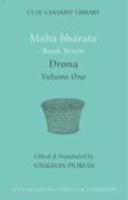
Book Summary
"The books line up on my shelf like bright Bodhisattvas ready to take tough questions or keep quiet company. They stake out a vast territory, with works from two millennia in multiple genres: aphorism, lyric, epic, theater, and romance." --Willis G. Regier, "The Chronicle Review" "No effort has been spared to make these little volumes as attractive as possible to readers: the paper is of high quality, the typesetting immaculate. The founders of the series are John and Jennifer Clay, and Sanskritists can only thank them for an initiative intended to make the classics of an ancient Indian language accessible to a modern international audience." --"The Times Higher Education Supplement" "The Clay Sanskrit Library represents one of the most admirable publishing projects now afoot. . . . Anyone who loves the look and feel and heft of books will delight in these elegant little volumes." --"New Criterion" "Published in the geek-chic format." --"BookForum" "Very few collections of Sanskrit deep enough for research are housed anywhere in North America. Now, twenty-five hundred years after the death of Shakyamuni Buddha, the ambitious Clay Sanskrit Library may remedy this state of affairs." --"Tricycle" aNow an ambitious new publishing project, the Clay Sanskrit Library brings together leading Sanskrit translators and scholars of Indology from around the world to celebrate in translating the beauty and range of classical Sanskrit literature. . . . Published as smart green hardbacks that are small enough to fit into a jeans pocket, the volumes are meant to satisfy both the scholar and the lay reader. Each volume has a transliteration of the original Sanskrit texton the left-hand page and an English translation on the right, as also a helpful introduction and notes. Alongside definitive translations of the great Indian epics -- 30 or so volumes will be devoted to the Maha-bharat itself -- Clay Sanskrit Library makes available to the English-speaking reader many other delights: The earthy verse of Bhartri-hari, the pungent satire of Jayanta Bhatta and the roving narratives of Dandin, among others. All these writers belong properly not just to Indian literature, but to world literature.a --"LiveMint" aThe Clay Sanskrit Library has recently set out to change the scene by making available well-translated dual-language (English and Sanskrit) editions of popular Sanskritic texts for the public.a --"Namarupa" After Bhishma is cut down at the end of the previous book of the "Maha-bharata," the book which bears his name, Duryodhana selects Drona as leader of his forces. Drona accepts the honor with Bhishma's blessing, despite his ongoing personal conflicts as mentor to both the Pandava and Kaurava heroes in their youth. The fighting rages on, with heavy losses on both sides. Furious and frustrated, Duryodhana accuses Drona of collaborating with the enemy, but he replies that as long as Arjuna is on the field, the Pandavas will remain invincible. When Arjuna is finally diverted from the main action of the battle, Yudhi-shthira entrusts Arjuna's son Abhimanyu with the task of making a breach in the Kaurava formation. Abhimanyu rampages through Drona's army, but at last is cornered by several Kaurava warriors and finally killed by Jayad-ratha. Co-published by New York University Press and the JJC Foundation For more on this title and othertitles in the Clay Sanskrit series, please visit http: //www.claysanskritlibrary.org
Book Details
| Book Name | Maha-bharata Book Seven Volume 1: Drona |
| Author | Vaughan Pilikian, Vaughan Pilikian |
| Publisher | New York University Press (Jan 2007) |
| ISBN | 9780814767238 |
| Pages | 473 |
| Language | English |
| Price | 946 |








